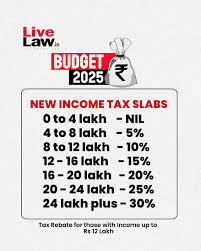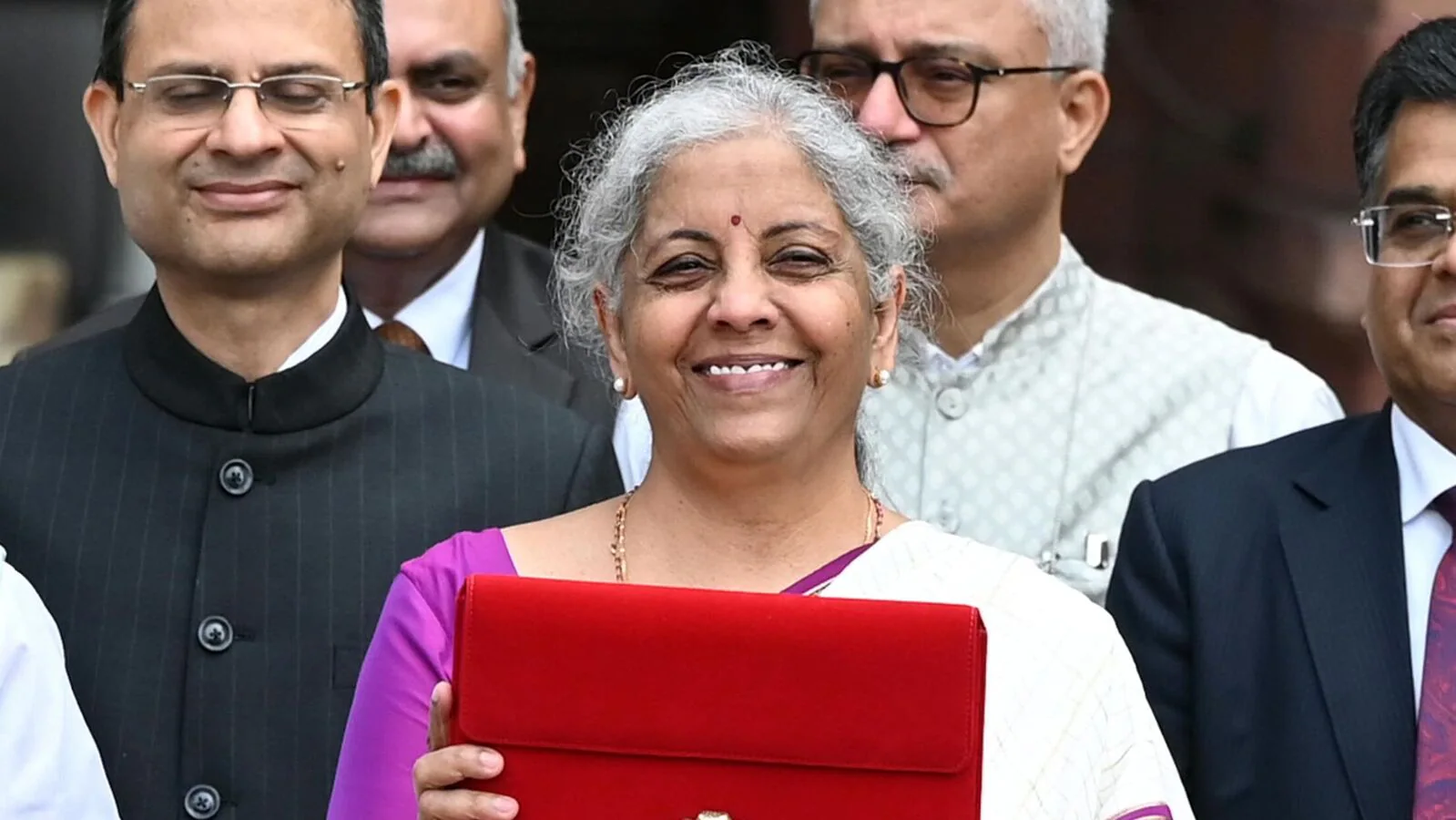The Indian government’s crucial economic document, the Union Budget of 2025, has drawn a lot of interest since it has the ability to change the country’s tax system. The comprehensive income tax reforms, which aimed to address long-standing complaints about tax rates, exemptions, and the overall burden on middle-class households, were among the most talked-about and anticipated parts of the budget. The Indian middle class, which is the foundation of the nation’s economy, might benefit greatly from these modifications, which are intended to revitalise the tax system. With an emphasis on the larger exemption level and lower rates for higher income bands, this article investigates the substantial changes to personal income tax that are suggested in the Union Budget of 2025 and considers their possible effects on the middle class.
Despite being progressive, India’s tax structure has frequently come under fire for being convoluted and placing an undue burden on the middle class. Income tax revisions have always been a part of every budget, but there haven’t been many significant adjustments that directly help middle-class people. The middle class, which makes up a sizable section of the taxpayer base, has long suffered from low exemptions and benefits and has been exposed to comparatively high tax rates. In order to boost economic development and increase disposable income, it has been anticipated that subsequent budgets will offer relief in the form of decreased taxes, expanded exemptions, and lighter compliance requirements.

India’s tax system, which is governed by the Income Tax Act, 1961, has been gradually changing, with significant improvements being implemented in recent years. However, with its extensive and ambitious revisions to the personal income tax structure, the Budget 2025 marks a turning point in these efforts.
A number of important policies that might significantly impact the middle class in India are introduced in the Union Budget 2025. The larger exemption level and the lower rates for higher income categories are two of the most significant improvements. The goals of these reforms are to make the tax system more equal, encourage greater incomes, and lessen the tax burden on people.
One of the main components of the income tax reforms in Budget 2025 is the increase in the exemption threshold. Under the previous tax regime, people making up to ₹2.5 lakh per year were exempt from paying income tax; however, in an era of rising inflation and rising living expenses, particularly for urban households, this threshold was frequently considered insufficient. In Budget 2025, the government announced a significant increase in the exemption limit to ₹5 lakh, which directly benefits a sizable portion of the middle class, especially those in lower and middle-income categories who were previously on the verge of taxable income. The government increases the exemption level to guarantee that those with lesser incomes are not taxed, increasing their disposable income. It is anticipated that this action would give households that are having difficulty keeping up with inflation and the growing cost of living a substantial financial boost. The ruling is also consistent with the government’s continued efforts to increase the number of taxpayers while preventing excessive taxes on the middle class.

The lower tax rates for higher income bands are a significant component of the income tax revisions in Budget 2025. In India’s former tax system, tax rates rose sharply as income levels above certain thresholds. Despite being required for equality, this progressive system frequently resulted in disproportionately high taxes for those in the higher middle-income categories. A more nuanced strategy is introduced in the Budget 2025, which lowers the tax rates for people making between ₹10 lakh and ₹25 lakh a year. These persons will now pay a 20% tax rate instead of the prior 25% under the new regime. Additionally, the maximum tax rate has been lowered from 30% to 28% for individuals earning more than ₹25 lakh. By making the tax environment more appealing and competitive for those with higher incomes, these adjustments hope to encourage people to increase their incomes without having to deal with large marginal tax loads. In addition to keeping talent and entrepreneurship in the nation, these lower tax rates for higher-income people would encourage more investment and consumption, which may have repercussions for the entire economy. The lower tax rates will have a noticeable impact on middle-class households’ take-home pay, especially for those in the ₹10–25 lakh income range. This will increase their savings and provide them with more financial security.
During her time at the Commercial Spaceflight Federation, Bandla worked with aerospace engineer Matthew Isakowitz. She later co-founded the Matthew Isakowitz Fellowship Program in his honour in 2017. The Program connects exceptional college students with innovative space companies like SpaceX, Millennium Space Systems, Virgin Galactic and offers them paid, summer internships in the field of commercial spaceflight.

The 2025 budget includes a number of steps to improve tax transparency and streamline the tax filing process, in addition to lowering tax rates and raising the exemption level. The implementation of a simplified online tax filing system, intended to lessen the intricacy and time-consuming character of the present procedure, is one noteworthy innovation. This streamlining is a welcome improvement for middle-class households, many of which balance job and family obligations. For taxpayers, the new method will be a more effective mechanism as it would guarantee easier compliance and quicker refund processing.
Additionally, Budget 2025 has a strong emphasis on increasing revenue collection transparency, which should lessen tax evasion and provide a more responsible system. The government aims to increase confidence among taxpayers, especially the middle class, who frequently voice discontent with the current tax collecting methods, by fostering justice and efficiency in the tax system.
It is anticipated that the changes made in the Budget 2025 would have a significant impact on middle-class households. Middle-income workers, particularly those in the ₹5–15 lakh income band, stand to gain the most from the greater exemption level and lower rates for higher income categories. They may keep more of their earnings, which they can use for investments, savings, or spending, thanks to the higher exemption threshold. The middle class will benefit from more discretionary income as a consequence, which will raise their standard of living in general. Additionally, those in the upper-middle class who were previously burdened by high tax rates will now have greater financial freedom thanks to the lower tax rates for higher-income groups. Middle-class families may save more money, invest more in housing and education, and have more financial stability overall as a result of this additional flexibility. Additionally, by increasing investment and consumption, two important pillars of India’s economy, the tax cuts are anticipated to spur economic development. Since the middle class is the main force behind both, these policies will directly benefit them since higher disposable income increases demand for products and services. This, in turn, could result in job creation, higher wages, and more economic opportunities for India’s burgeoning workforce.
India’s middle class might benefit greatly from the income tax revisions included in Budget 2025. Reducing rates for higher income categories and raising the exemption level are important steps in resolving long-standing complaints among this important group. In addition to offering immediate financial relief, these measures will promote a more efficient, transparent, and equitable tax system. These measures are anticipated to have a long-term effect on middle-class people’ financial well-being by lowering the tax burden and promoting savings and investment, as well as supporting India’s overall economic stability and progress.
The government’s acknowledgement of the middle class as a crucial development engine and a significant stakeholder in determining the direction of India’s economy is reflected in the actions implemented in Budget 2025. A more wealthy and financially secure middle class might result from these reforms if they are successfully implemented, increasing economic resilience in the years to come.
Written by- Harshi Shah
Edited by- Rajan Patel




